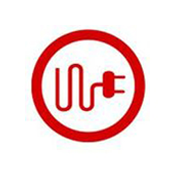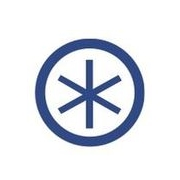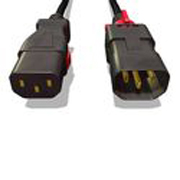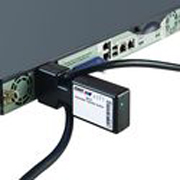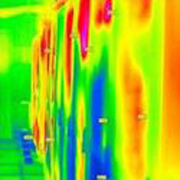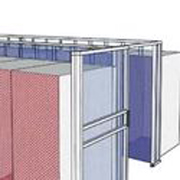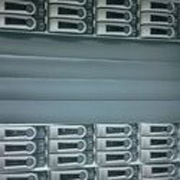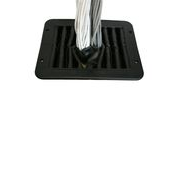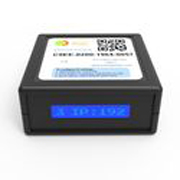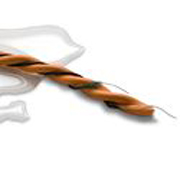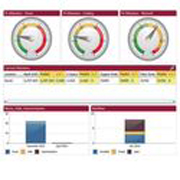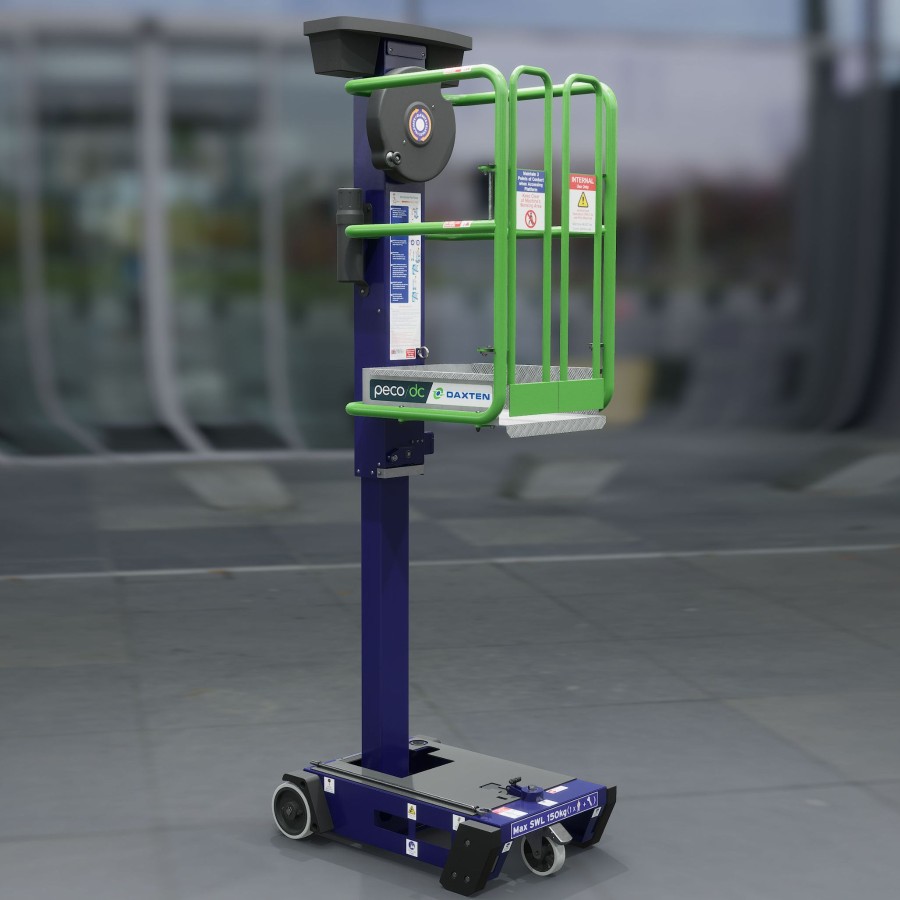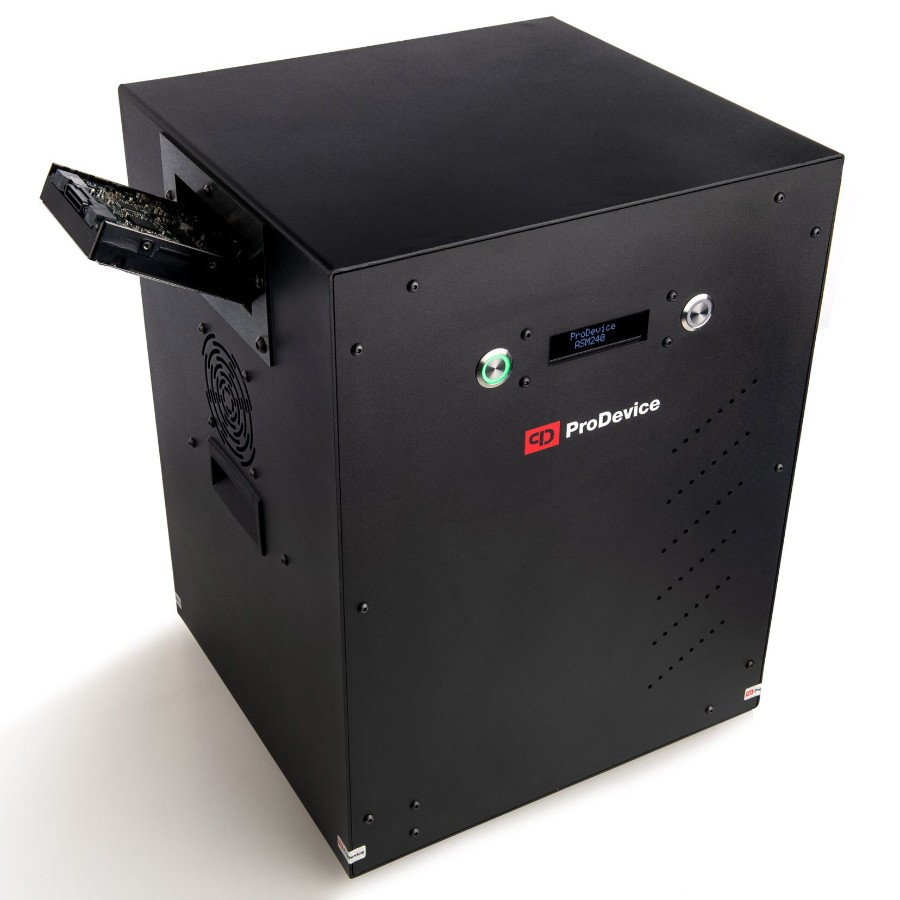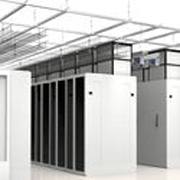Daxten Ltd
For more than 25 years Daxten has provided innovative solutions to the data centre industry. As a manufacturer and distributor of innovative solutions, Daxten is at the forefront of promoting energy efficiency within the data centre. The company offers cutting edge cooling optimisation, power distribution, monitoring and infrastructure solutions that improve the resource efficiency, reliability and security of the data centre. End‐to‐end power distribution solutions support IT managers in their pursuit of reliability and efficiency of IT operations. Daxten is also a Value‐Add Distributor for IT management and data centre facility solutions from market‐leading vendors. In addition, Daxten is a leading manufacturer of its own connectivity product lines. The company has facilities, subsidiaries and partners across Europe. As a provider of connectivity, power and cooling optimisation, monitoring and high‐end KVM products as well as infrastructure management solutions it is our mission to support IT managers worldwide, to ease their working life and to protect their companies against critical downtime. In Europe Daxten is headquartered in London and Berlin. For further information please visit www.daxten.com/uk/
-
Data Destruction by Magnetic Field or Brute Force?
28 September 2023The fact is: This year the unimaginable number of around 125 zettabytes of data will be generated worldwide. And according to forecasts, this number will continue to grow by between 20 and 30 percent in each of the next few years. To illustrate: A zettabyte is one trillion bytes, which is a number with 21 zeros. If you were to store only a zettabyte of data on DVDs and stack all the media you need, then this DVD tower alone would be around 52,000 kilometres high. A major driver of the overall data generated is the use of any form of cloud services. And, of course, companies around the world also have a significant share of the generated data volumes. For archiving and backup purposes, this data is stored on various types of data carriers, which of course include magnetic media such as HDDs and LTO tapes. These house data and information on customers, contractors, business data, business development strategy, and marketing and financial plans, to name only a minimal selection of sensitive and confidential information. Data protection regulations and regulations oblige the sparing storage of necessary data and stipulate the periods after which data are then to be destroyed again. This task is incumbent on the companies - and they have to find the best method for themselves to delete data securely and permanently.
Up to now, the prevailing opinion was that the destruction of data carriers should be done in the same way as with the destruction of information recorded on paper, namely by shredding it. Accordingly, there is a wide range of devices on the market that shred media into small pieces, punch holes or break them – and many users are convinced that such physical fragmentation of media guarantees the effectiveness of the data destruction process. Unfortunately, this method of destroying data is not completely secure. Some data can be recovered from damaged media. It's not easy, but it's possible. There are many reputable companies and authorities, but unfortunately also people with criminal energy who can recover data from shredded media, even if they have been cut into the smallest pieces.
Data destruction by magnetic field or brute force
An interesting alternative to such a brute procedure for destroying data on magnetic media, which also promises maximum security, are so-called degaussers (demagnetizers). Their functional principle is very simple: Let's imagine that the surface of a hard disk is covered with countless very small magnets. Each magnet has two poles - N (North Pole) and S (South Pole). When data is written on the disk, the poles line up according to the order of the bits (digital ones and zeros) that make up the data, such as a text file or a photograph. The process of degaussing now aims to change the magnetization along the surface of the platter in such a way that all the magnetic poles are randomly arranged. A degausser achieves this for a fraction of a second, which affects the hard drive. In addition, servo paths and disk calibration information are destroyed. As a result, the hard drive cannot be reused, and all data previously stored on it is irretrievably deleted.
The whole process takes just five seconds using a high-end degausser device like ProDevice's ASM240, which is available from data center optimizer Daxten. Exactly as required by data protection law, the destruction is fully automatically documented as an image and video using integrated functions. Whereas with shredding, every single step of the destruction must be recorded, photographed, filmed and logged manually by the staff.
Space-saving, flexible and health-friendly
Degaussers score big because they work quietly and, unlike shredders, do not produce enormous noise and sharp-edged small parts or emit dust and the pollutants it contains. And last but not least, degaussers with the footprint of typical office equipment are very compact, space-saving and can be used flexibly at different locations - especially when you compare them with automatic shredders, which often reach dimensions that are more familiar from high-performance copy machines, and with weights between 500 and over 1000 kilograms cannot exactly be described as handy and mobile.
Recyclability for sustainable and resource-saving data destruction
Electrical and electronic waste equipment and associated components, which of course also include magnetic data carriers, cause one of the fastest growing waste mountains in Europe. A declared goal is to recover treasures such as rare earth elements or permanent magnets from this via recycling processes, because Europe is dependent on the import of these materials and raw materials, as there are currently no marketable substitutes available. The higher the recovery rate of these materials during recycling, the greater the reduction in dependence on exporting third countries and their maximum price policy. Retrieving the valuable materials from degaussed but physically undamaged media is of course incomparably easier, more effective and more productive than from shredded, broken or otherwise destroyed magnetic media carriers.
Further information on ProDevice's degausser technology and product solutions is available from Daxten via +44 (0)20 8991 6200 or info.uk@daxten.com.
-
DCW London 2023
8 March 2023Daxten will have a stand D720 at DCW London 2023. For further information, please visit: www.daxten.com
-
Tips And Tricks In Searching For An Optimal Monitoring Solution For Your Data Centre
10 February 2023Picture a situation that often occurs in real life: Administrator Max Z. has been commissioned by his data centre manager to create a recommendation for a monitoring solution for both environmental and power conditions. He needs to identify business specifications, available monitoring solutions, and which systems should be shortlisted for consideration. During this process we look over Max Z.'s shoulder and get into his thought process:
Why is it always me?!? Why has this landed on my plate!?! Okay, it‘s my job and complaining doesn‘t help. We need a monitoring solution for our data centre. Before I start researching wildly on the web and get completely overwhelmed by the abundance of offers as well as the numerous functions, features and benefits, I need to focus. I’ll start with the features we need most:
- We would like to have the ability to permanently monitor all vital power data at every distribution level, as well as environmental conditions such as temperature, humidity and differential pressure at the room, row, rack and location within a rack.
- The monitoring tool should also act as an early warning system that warns us of critical changes in power values and environmental conditions so we can prevent system malfunctions and failures.
- The system should detect thermal weak points in our environment in order to better distribute loads and save energy.
- The underlying data must be reliable and accurate enough to calculate PUE to compare our energy efficiency against other data centres.
- More importantly, we need to develop our own parameters that track the relationship between IT performance, energy consumption and CO2 emissions to report our data centre’s energy efficiency and sustainability progress over time.
Specific requirements for the monitoring solution
With the overall busines requirements set, Max looks more specifically at what they should monitor: There are a total of ten rack corridors in our data centre, with the cold aisles being contained. The power distribution to the racks takes place via the ceiling with a busbar system with a redundant design. An A and B supply line is set up in the racks via PDU power strips for the active IT devices. We need to track power metrics for each device, especially the business-critical IT hardware. We are also interested in the total load per rack and the control of power consumption and utilisation of distributions and outlets.
The contained cold aisles are of particular importance for monitoring the ambient conditions. Monitoring the cooling air pressure is important here. Finally, it is important to prevent the fans of the servers in standby mode from starting to move if the air pressure is too high, which can damage the hardware. We also have to keep an eye on the humidity, because if it is too high, the servers have to regulate the condensation, which means higher energy consumption. If the humidity exceeds the values specified for the server over a longer period of time, this can possibly even lead to corrosion, system malfunctions or failures. If it is too dry, in the worst case we may have to deal with short circuits in the IT hardware. Of course, we also need to know the temperatures inside and outside the contained aisles so that we know how efficiently we are cooling. If we find that the supply air temperatures are too low, we can adjust to avoid excessive loads and costs of cooling.
Installation and security wish list
Since my colleagues and I have to install, set up, maintain and, if necessary, expand the entire monitoring system, there are a few more items for my wish list. We already have an existing DCIM system. It should be possible to integrate the management of the new monitoring solution into that. What we definitely don't want is to have to work with isolated solutions and proprietary management tools for the environmental and power metrics.
Also, I don't want to have to lay miles of cable during installation. Nor do I want to configure hundreds of measuring modules and sensors individually. The total setup effort should be kept within reasonable limits in terms of work and time. The same also applies to system maintenance and future additions when needed.
Another important aspect is security. As with other applications, we need user and access rights that we can define individually. Data communication should be encrypted and of course we need backup options to avoid data loss. It would be ideal if the monitoring system, like our entire infrastructure, could be set up with a kind of redundant safety reserve in order to be able to receive the data even in the event of short service interruptions and planned or unplanned downtime.
What's on the market?
Now that Max has a solid list of requirements he looks at what’s available. After extensive online research, initial discussions with various providers and reading specialist articles, Max reaches several conclusions:
- There are quite a few monitoring system manufacturers with diverse types of solutions and functionality. They generally consist of a hardware and software or web-based management system. The power monitoring sensors measure either as independent devices or integrated into PDU power strips.
- Depending on the requirements and the choice of solution, a selective or extensive monitoring structure can be set up at the device, room, building and location levels.
- For many of the solutions, the individual sensors are connected to one another via a copper cable route in a daisy chain format. These are practical when a manageable number of monitoring modules are to be installed locally.
- Bus systems are available for recording and checking current and environmental parameters directly in the rack. The corresponding measurement sensors are connected to a bus interface in the cabinet and their signals are then looped through from rack to rack to a central administration unit.
- Radio-based wire-free monitoring systems offer a special feature. There is no physical connection between the individual measurement modules. They communicate with each other by radio and form a mesh network. A special gateway is used for data collection and distribution. This wireless solution is from Packet Power, which can be obtained from the data centre specialist Daxten. Using a dynamic radio wire-free network, it receives the data from the measurement modules and forwards them via common open protocols such as SNMP or Modbus TCP/IP to a system-specific management interface or to any BMS or DCIM application.
- Most of the hardwired and bus solutions also communicate with a data centre or building management system (BMS) via open protocols. But before the data can flow and be analysed, extensive installation work is required.
Start-up and setup differences between wired and wire-free systems
In cable-based systems, the "daisy chain" is first installed by hand by attaching the individual sensor modules in or on the rack using appropriate assembly kits and finally connecting each module via a cable section to the central system management unit at the beginning and the end of the string. Very simple systems only offer a proprietary administration interface, through which individual identifiers and access authorisations can be configured manually for the measurement modules. More demanding wired solutions as well as bus-based systems allow the modules to be addressed via TCP/IP and also offer the option of automatically assigning access rights using existing user databases.
Wireless systems seem to be particularly elegant to implement. With the Packet Power solution just mentioned, the radio wire-free measurement modules automatically configure themselves after being switched on and logged into a dedicated radio network. They start their measurement activities independently. The wire-free network is formed by the measurement modules and gateways. All system modules in the wire-free network are recognised via a central management tool, provided with an ID and managed user and access rights can be defined individually.
Wiring, cabling and radio
The amount of time and work required to install cable-based solutions varies by the type of monitor. Environmental sensors for temperature, pressure and humidity are relatively easy to place on rack fronts and rears or mount using brackets. Power sensors either need a cable connection to suitable PDU power strip in the rack or integration into the power strip.
Individual device level monitoring must either be prepared for current monitoring, which is only the case with very few devices in the inventory, or third-party energy meters must be used. To measure power values on busbars in the spatial distribution, modules must be retrofitted in the tap-off boxes and the feeders, hardwired and routed along the busbars to the central administration unit via communication cables.
The situation is similar with the control cabinets and switchboards that are to be integrated into the power monitoring system. Here the cable harnesses with the current transformers are to be placed on the conductors and the corresponding data cables are to be pulled. Of course, both require an expert hand, longer planned downtime and the temporary risk of not having the redundant power supply path available for the duration of the installation.
Wireless monitoring modules require significantly less time to install. There is no cabling for data communication at any distribution level since this takes place via a wireless network. Packet Power also offers pre-assembled power cables with an integrated wireless measurement module. These replace existing power cords that servers, network switches and PDU power strips are equipped with. The wireless measuring devices can also be integrated as pre-assembled kits in feeder boxes and distributors for single or three-phase current from 10 to 2000 amps. Devices report volts, amps, watts, power consumption, frequency, power factor and apparent power or peak consumption. Readings can be broken down from the spatial distribution level through the rails to each rack and down to individual devices.
System administration and optimisation control centre
Great, thinks Max, we know what to expect during implementation. Now we need to understand what the data looks like and what we can do with it.
Whether monitoring by cable, bus or radio, all measurement data on power and the environment is usually routed via gateways or central administration units and made available in the first instance via a system-specific, mostly web-based administration tool.
Depending on the manufacturer and system, the data can be organized and viewed in tables and dashboards or via 3D maps. Max and his colleagues always have current and trend reports on power usage at building, room, rack or device level and on environmental parameters for each room, per row of racks, rack or for the different levels and heights in the individual cabinets. In addition, consumption values for company-critical IT devices, the utilisation of distributions and individual outlets as well as temperature, pressure and humidity values on the racks, electricity costs and CO2 emissions can be read.
It is also important that the management platform used supports pre-definition of threshold values for critical power and environmental values so that automatic warning messages are triggered via SNMP or email if these are exceeded. If the management tools of the monitoring solutions offer integration into an existing DCIM solution, extended functions for user and device management, reporting features, data analysis, troubleshooting and optimisation actions are available.
Extensions and system maintenance
While very simple monitoring solutions use the daisy-chaining method, they are often limited in terms of the number of monitoring points that can be integrated and the total distance that can be covered. In the case of the physically connected systems, sensors can be added to the 8, 16 or 32 connection ports of the central control unit, which are usually provided until the control unit is full. Theoretically, these wired solutions are scalable by adding new control units and sensors.
Wireless systems, on the other hand, use a gateway as the central control. The gateway collects and transfers the data from up to 100 wireless measurement modules. The number of monitoring sensors can be expanded as needed by adding additional gateways. Each gateway needs only one IP address, while wired systems very often require an IP address for each individual measurement sensor. The wireless systems are also open to the integration of third-party measurement modules that are already in use via an optionally available hub, provided they communicate via SNMP or Modbus TCP/IP.
System maintenance of cable-based and bus solutions is usually carried out via the central control units via the web or storage media. With the wireless radio system, firmware upgrades can be automatically installed on all system modules via radio or via the web using the management tool.
Failure protection and data security
Just as the entire data centre environment in which Max Z. works has built in redundancy, there is a requirement that the operation of the monitoring system should also be sufficiently protected against network disruptions or power supply interruptions. With the more powerful cable and bus systems, the central control units are usually equipped with a redundant power supply. The recorded measurement data is provided with a time stamp, logged and stored either locally, on multiple storage media or – if permitted – in a secure cloud.
In a wireless solution, data is backed up in a similar way. Protection against failure is established with a back-up gateway. In addition to a primary gateway, one or more back-up gateways can be connected to a different power supply path than the primary gateway. The gateways cyclically synchronise their data with each other at very short intervals. If a gateway fails due to a power supply path or network failure, all measurement data is retained via the backup instances. Data collected locally on the radio measurement modules are protected by a keep-alive function in the event of a power failure.
Transfer of the measurement data can be encrypted with the wireless system just as with physically connected solutions. It is also worth mentioning that, according to the manufacturer, the dynamic radio frequency band used in the proprietary Packet Power system (not ZigBee or WLAN) has a high level of interference immunity and there is no interference with other devices in the data centre.
Administrator Max’s conclusions
There are a few solutions on the market that appear to meet our specified requirements. They can give us what we want, namely valid information about the load distribution in the data center and whether the power consumption and the environmental conditions are in the green. Only a subset of solutions deliver warnings at the thresholds of the critical areas including irregularities or overloads in the supply, power increases, unfavorable temperature developments and other critical environmental conditions. They can help us be more energy efficient by showing which power supply path and racks have power reserves and where there is an opportunity to install additional hardware without impact.
Personally, I find the radio-based Packet Power monitoring solution pretty sexy for the following reasons: Firstly, because it can obviously cover the entire range of services we require. Secondly, it could save us a lot of work and effort thanks to the simple and cable-free installation as well as the automatic self-configuring monitors. Thirdly, I like that it offers useful functions for data backup and failover protection as well as many performance reserves and expansion options for future deployments. And last but not least, the monitoring system is able to exactly quantify the energy and CO2 savings for every efficiency-enhancing measure that we deploy and provide corresponding indicators for evaluation.
I’m ready to present my boss with the business specifications, available options and my recommendations for our data centre’s monitoring system. I’m confident he has the right information to choose wisely.
To dive deeper into this subject and for more best practices to optimise your data centre infrastructure, please contact us on +44 (0)20 8991 6200 or via info.uk@daxten.com.
-
Play It Safe With Irretrievable and Fully Documented Data Destruction on Magnetic Media
29 June 2022Over the years and with the obligation to archive important company data, companies sometimes accumulate tens, hundreds or even thousands of data carriers with sensitive data. This mountain of data also piles up with backup storage media and data carriers containing temporary information. Depending on the type and nature of the data, these either must be disposed of immediately or dispoed of only after a certain minimum storage period, they then cannot be taken to the recycling center - and that's a good thing. The destruction must of course be in accordance with various security regulations and corresponding documentation requirements. It is very helpful if you have a solution for data destruction to hand that carries out the deletion quickly, securely and transparently. The Degausser ProDevice ASM240, which is now available from Daxten, makes short work of the data destruction on magnetic media: a magnetic field of up to 20,000 gauss ensures that the data is irretrievably destroyed within less than 30 seconds. The process of data deletion is fully monitored and logged.
The functional process of the degausser can be summed up in a simple formula: load it up, insert the data carrier and let the cycle start, scan the serial number and document everything by using the mobile app – and you are done, The whole process takes between 17 or 30 seconds, depending on whether you are using the ASM240+ or ??ASM240 product variant. The intuitive app takes photos or films and records what type of media was deleted, the time of destruction, information about the operator and the serial number of the destroyed component. In addition, the result of the deletion process is determined and classified. Depending on the requirements, the number of deletion cycles can be specified using a web-based tool using PPMS (Pre-Paid Management System) technology.
The enormous "appetite" of the degausser for almost any kind of magnetic medium is as practical as it is pleasing for the user: It can be used for 2.5 or 3.5 inch hard disks as well as LTO, DLT, SDLT, DDS, DAT tape drives , AIT, Travan, SLR, QIC, 3592, 3590E, 3490E, 3480, 9840, 9940 and T10K. The contents of audio and video cassettes and 3.5 inch computer discs can also be reliably and irreversibly erased.
To ensure that each deletion can be carried out in accordance with the applicable security standards and norms, the ASM240 products work according to the guidelines of the ISO 27001 standard (international standardization standard for information security management systems) and are therefore a perfect suitable solution for institutions and companies that want to ensure the protection of confidential data within the framework of the GDPR.
Further information on the ProDevice degaussers is available at +44 (0)20 8991 6200 and info.uk@daxten.com.
-
Tips and Decision-Making Tools For Choosing The Best Aisle Containment Solution For Your Data Centre
29 June 2022Tips and decision-making tools for choosing the best aisle containment solution for your data centre
For everyone, who intends to or is intending to realise energy savings in the data centre, it can be worth taking a closer look at the airflow path of conditioned air from the source of production to the hardware in the cabinets that require cooling. In the worst cases, up to 60 percent of the cold conditioned air can be lost through bypass airflow. This can be through openings in the raised floor, free rack U space that is not sealed, through aisles that are not contained and under the raised floor because of missing or inefficent guidance of the airflow. All these factors have dramatic impact on costs: While newer CRAC unit installations in the best case only contribute to around 10 percent to the total energy costs, the proportion of older installations often exceeds the 60 percent mark. This is particulary true for legacy data centres that have been operating for a number of years, but it is also true for newer data centre environments. There are great opportunities for optimising the efficiency of cooling and airflow guidance to save energy costs and to increase the sustainability of the data centre.
What are the saving potentials of optimised cooled air guidance and aisle containment?
Due to the fact that many data centre designs rely on complete room air-conditioning instead of cooling contained cold aisles, it is estimated that between 20 and 30 percent of the cooled air gets lost and wasted through bypass airflow. This is compounded by the fact that still in some data centre environments the server cabinets are not arranged back to back as separate hot and cold aisles. Therefore, at a basic level nothing is done to prevent the mixing of cold and hot air. Of course it is not disputed that this basic approach does not lead to a perfect separation of hot and cooled air, since the hot air rises up the rear of the cabinet, it flows over the top or around the side of the cabinet and re-circulates to the front of the rack. In addition, the hot air can also re-circulate into the cold aisle through non-sealed openings between servers or vertical profiles within the cabinet. Therefore, it is essential to hermetically seal the cold from the hot aisle with a containment solution. With constant cooling input, measurements show the temperature differential between the hot and cold aisle can be up to 10 to 15 degrees Celsius. This allows for the room temperature to be raised – and for every degree Celsius set points are raised an estimated 2-3 percent energy savings can be made.
There is no such a thing as “the“ aisle containment solution
There are a wide range of aisle containment systems from different vendors in the market. Frequently, structural solutions are offered that consist of rigid side profiles, sliding doors and ceiling panels. These components are usually mounted directly around the cabinets that are installed side by side forming the cold and hot aisle. As an alternative, flexible curtain containment strips can be used, which are assembled to overlap and are mounted via special supports directly onto the aluminium profiles, which are hung from walls, ceilings or directly onto the rack. Correctly installed, the efficiency rate of this kind of curtain solution is nearly the same level as one of a solid containment system.
If the containment system is to be installed into an existing data centre, then some aspects in terms of preliminary planning, material preparation, project duration and costs will have to be taken into account. When a soft or solid construction is planned, then ideally all the measurements will have to be taken very accurately onsite in the data centre so that all profiles, panels or curtain strips can be exactly tailored at the manufacturer’s production facility. If this preliminary planning has not been carried out very accurately or in the case that alterations might become necessary on the customer’s premises, then some re-working, fine cutting and redesigning will have to be done to materials such as glass, metal, plastic or brackets. This can lead to greater build time and costs, if the materials are not modular or prefabricated in a way that adjustments can be performed quickly and smoothly.
In choosing the most suitable containment variant, the nature and structure of the rack environment plays a big role, If it is a homogeneous one, with cabinets from one vendor with identical dimensions, then a common solid containment system can be created at a reasonable cost, using standard profiles and panels. Whereas in heterogeneous (commonly known as „Manhattan Skyline“) environments with different cabinets, heights and depths that have grown organically without the benefit of a clean sheet design, the use of a modular containment solution with solid or soft or a combination of both elements has proven to be effective in terms of flexibility, low installation time and costs.
Considering the integration of existing fire alarm infrastructure prevention systems
When making the decision as to what kind of containment solution should be installed, it is very important to take into account that the existing fire alarm and extinguishing systems need to be integrated. When containing the aisle with curtains this integration can be done usually by simply mounting the curtain under the ceiling of the data centre. In the case of a solid containment solution being chosen, then it should be assumed that the containment ceiling construction should automatically fall away in the event of a fire. The containment roof uses heat sensitive panels so if the temperature in the immediate vicinity climbs to 57 degree Celsius, then the feather-light panels will drop into the aisle, the roof of the containment system falls away meaning the aisle is open and the fire suppression system can automatically be deployed completely filling the area.
Special consideration when extending, dismantling and re-using
When adding cabinets with identical dimensions to the existing ones, then the installation element is straightforward as usually only the doors require relocation and additional standard roof or framework elements need to be mounted. A simpler and less time consuming kind of expansion can be realised with a modular containment system. As it is time consuming and difficult using standard solid structural solutions in terms of dismantling and reusability: Panels that are cut to size or screwed together are very limited in how they can be reused in other places in homogeneous environments and it is nearly impossible to reinstall these in heterogeneous rack surroundings. The situation is different with the modular alternative: The profiles for the ceiling, wall or frame to which solid panels or curtain strips are attached can be easily dismantled and reused in another location. Most of the elements of a modular system allow themselves to be reused in any rack arrangement, newly customised or supplemented by new elements at very low costs.
Solid and soft aisle containment combine together into a hybrid solution
Due to the advantages and disadvantages of solid and soft containment described above, it is clear that a choice has to be made by data centre managers as to which system to use. But this does not neccessarily have to be the case, since the Intelligent CoolControl Containment solution from Daxten integrates both containment types and offers the use of this hybrid system for cold aisle and hot aisle containment.
This hybrid solution consists of aluminium profiles that can be connected to form a frame, which can be attached to walls, ceilings or racks. The frame offers a simple system to attach the soft containment curtains elements or to connect solid panels made of plastic, glass, steel or Perspex or a combination of all of these. Due to this concept and design, data centre professionals can profit from a wide range of choices and user advantages. As an initial guide to find a suitable solution, it might be worth taking a look at the following key questions:
1.) What would you like – containing the cold or hot aisle?
First of all it is recommended to check if a cold or hot aisle containment system would better be suited to the specific data centre environment. The more common method is to contain the cold aisle, however, it is also not unusual to contain the hot aisle with a hybrid system „to catch“ the hot exhaust air. The heat dissipation can be managed by in-row cooling systems that are integrated into the rack rows to cool down the hot air. In this instance, the cold aisles are supplied with conditioned air through the existing room cooling capacities. This method does not require a raised floor infrastructure that is typically required, when a cold aisle containment solution is implemented.
2.) How to get the maximum efficiency out of your investment?
Ideally before you start planning a containment solution, a thermal and energy usage analysis of the data centre environment should be carried out. That way, the potential benefits of the airflow and cooling optimisation measures as well as the energy savings can be determined. And of course it is important to be able to prove that the identified optimisation potential can be atained in practice. A hybrid containment solution offers a budget-friendly test run by simply starting with the containment of one rack row. The metrics received from this trial should be analysed and projected. On the basis of this trial, the user can decide, if a soft, solid or combination of both methods would fit best to their environment. In the same vain, the pay-back period and return on investment can be estimated quite accurately.
3.) Solid, soft or hybrid containment? The character of the room driving the design
Special attention will have to be paid on differing ceiling heights, ceiling joists, support columns and further structural restrictions in the data centre as well as number, dimensions, density and floor footprint of the cabinets. Another important role the infrastructure plays is for the prevention of fire. And last but not least, it should be considered, if racks will be added to single rows or if new cabinet rows are planned for future expansions. A rule of thumb could be: The more structurally rugged the environment and heterogeneous the rack infrastructure is, the more it is recommended to choose a modular containment design. The option to perform at any time a structural retrofitting or to setup a combined soft and solid containment solution, provides the maximum of flexibility and protects the investment in the long-term.
Essentials for exploiting the full potential of an aisle containment solution
A hybrid system does not only combine the advantages of common containment systems, it also integrates further modules and methods for the optimisation of airflow guidance and cooling air pressure, which help to realise the full potential of an aisle containment solution. Included in these optimisation best practices are simple blanking panels which are used to seal the free U space of racks in the cold aisle. With this inexpensive measure a weak point of cold aisle containment can be eliminated that is not on anyone’s radar: It prevents the recirculation of hot exhaust air of the IT hardware through the cabinet. The physical barrier keeps cold air at the front of the cabinets in the cold aisle separated from the hot air at the back in the hot aisle. This leads to higher cooling efficiency, prevents hot spots and resulting hardware failures or downtime caused by overheating.
A further key building block are perforated floor tiles, which manage the constant pressure of the cold air supply out of the raised floor into the front of the cabinet hardware in the cold aisle. To get rid of bypass airflow and thermal imbalances directly in the rack, special raised floor baffles with integrated cable openings and elastomer grommets are used. The baffles shoud have a high load-bearing capacity which can handle, for example, the weight of fully equipped server racks. The integrated grommet securely seal the cables to ensure that no cold air escapes in these places and to prevent dust and foreign particles from being blown into the inside of the rack from the raised floor which could result in operating malfunctions or shortened service life of the hardware. The grommets also prevent cold air from escaping from the rear of the rack. The lighter warm air emitted by the hardware would otherwise be vertically channelled to the top of the rack allowing it to flow back along the sides. This is quite an effective way of keep hotspots from forming and to maintain the efficency of the cabinet cooling.
Monitoring makes containment even better
To take and analyse measures such as temperature, relative humidity and differential pressure within a contained aisle, it is recommended to use a monitoring solution. Why is this important? Of course, to identify critcal temperature developments and to be alarmed at once, before it leads to downtime or damages to the hardware or power inefficiencies. The well balanced pressure of the conditioned air inside the contained cold aisle is important as well – not only to prevent high loads and associated costs of the cooling units, but also to avoid the fans of the servers in standby mode being set in motion because of too high air pressure as this could result in possible damages. In addition, it should be considered that the relative humidity plays an essential role too. If it is too high in the contained aisle, then the servers need to regulate the condensation, which goes along with incresed power consumption. If the specified values for humidity of servers are exceeded continuously, then there exists the risk of corrosion, hardware failures and downtime. In the case that the humidity becomes too low, this could lead to static charging of the active IT devices and short circuits.
There are quite a lot of monitoring solutions in the market to control the mentioned parameters. Particulary smart a wire-free radio monitoring solution called Packet Power get’s this job done. The special feature is that the sensor modules communicate via a dedicated wireless mesh radio network (no WiFi), they are self-configuring, require no cabling work and are therefore very easy and quick to implement. All measurement data is transferred wirelessly to a gateway and accessible via a dedicated system management tool or any third-party DCIM or BMS application. If it comes to critical develompents in regards to temperature, differential pressure or humidity inside or outside the contained aisle, the IT personnel will receive alarm notifications. Since the system can easily be extended with wire-free power monitoring modules, power measurements on any distribution level within the rack or room can be taken and transferred wirelessly to the data centre management tool. With all environmental and power data at hand, the perfect basis for planning is given to equip each cabinets with the optimal number of active devices and to balance power as well as cooling loads efficently.
Enhancements, benefits and the icing on the cake
With the integration of the methods for the optimisation of the conditioned airflow into a hybrid aisle containment system and the additional monitoring solution it is possible to increase the effectiveness of such a containment application compared to other common solutions. In total and depending on size and layout of the data centre environment, the efficiency enhancement can exceed significantly the 30 per cent mark as mentioned in the beginning. Concrete cost savings result from the more efficient use of existing cooling capacities and are also reflected in the reduced loads of the CRAC units. Additional indirect economic advantages are associated with the following functional benefits: Constant humidity, well balanced pressure of the cooled air and low environmental temperature within the contained aisle extend the lifetime of the cabinet hardware and protect these against inefficient operating conditions, heat releated malfunctions and downtime.
Further a hybrid system convinces with its modular design and the option to contain the hot or cold aisle, with curtains, structural material or a combination of both. Low material costs, tailored prefabrication of profiles,panels and curtain strips as well as flexible and quick customisation possibilities at the data centre premises contribute to time and financial savings. If further taking into account the given extension, dismantling and reuse options, then tangible economical advantages are also offered for the medium and long-term. All in all, Daxten estimates that the average amortisation period of common containment solution which normally is between twelve and eigtheen months can be reduced by a couple of months when using a hybrid solution.
Hosting and colocation providers will appreciate that Daxten offers wire mesh and metal sheet panels for its containment system for additional security. Compartments can be installed both quickly and flexibly with the aluminium base profiles – of course with integrated containment at the customer's request.
To dive deeper into this subject and for more best practices to optimise your data centre infrastructure, please contact us on +44 (0)20 8991 6200 or via info.uk@daxten.com.
-
Daxten wins Data Centre Safety and Security Innovation Award at the DCS Awards 2022
29 June 2022We are very proud to announce that JLG Power Towers together with Daxten have won the DCS Award 2022 within the category of “Data Centre Safety & Security Innovation of the Year”. Thanks to your votes, our brand-new PecoDC raised access platform was crowned the winner. This completely manually operated people lifter eliminates ladders, podiums, step-ups and scaffolding in the data centre whitespace creating a safer and more sustainable working environment with improved productivity. By simply rotating the operator handle, the patented lift mechanism glides you smoothly to any working height up to 3.5 metres in seconds. In this way you are in the best position to perform high level maintenance, repairs, installation or visual inspection work in your data centre easily, safely and smoothly.
To learn more, how the recently awarded PecoDC lifter can ease your DC working life, please visit https://www.daxten.com/uk/pecodc-people-lifter.html
-
Data Centre World 2022 - VISIT US ON STAND D450
22 February 2022Data Centre World is welcoming you back in 2022. It is one of the world’s largest and best attended data centre technology events and continues to offer the latest technologies and trends, that assist with the challenges data centres on a global level experience. DCW is being held at ExCeL London on March 2-3, 2022.
Daxten will be exhibiting at DCW 2022 on stand D450. We look forward to welcoming you to our stand to view the latest in data centre mission critical power distribution, wire-free radio power and environmental monitoring systems and leak detection solutions. These are ideal to increase the resource efficiency of all kinds of data centre infrastructure. Furthermore, we will be showing fully customisable rack PDUs and best practice technologies for transporting and installing heavy IT equipment easily and safely. Come and learn more about cooling optimisation and reducing energy consumption and how you can increase the energy efficiency, space usage and security of your data centre.
We look forward to seeing you there! For further information and/or to arrange an appointment, please contact us at info.uk@daxten.com or +44 (0)20 8991 6200.
-
Protection Starts at Reception - Contactless Measurement of Body Temperature
15 October 2020According to the World Health Organization (WHO), one of the key symptoms of the Coronavirus and other diseases is a fever. Core temperature as well as skin surface temperature are used for testing; In public spaces, the surface temperature of the forehead is measured. Normally this can be done manually by using a portable device. This requires personnel to operate it, and very often social distancing cannot be maintained when taking the readings. Alternatively intelligent monitoring stations can be used, but these are associated with high investments and operational costs. The solution? Instamon Safe Entry. This solution, available from Daxten, for contactless measurement of body temperature can be easily wall mounted or fixed to a stand at a suitable height for users. No cables are required – the device‘s AA batteries allow for up to 100.000 measurements, meaning a long and reliable operation. After activation, the person is detected automactically and guided by arrows on the display to the optimal position for taking the measurements. The whole procedure takes only a few seconds and the system displays immediately if access to the building is granted or denied.
Exact measurements and perfect positioning
For temperature measurement the solution uses a highly sensitive multipixel infrared sensor. The intelligent guiding system makes sure that the person is positioned quickly and easily into the right place for an accurate reading. The operating mode is compliant with GDPR. The complete measurement procedure is optimised by serveral features and is particulary reliable: Attempts to manipulate the temperature screening can be detected and signalled by an alarm. Thanks to intelligent reading analysis algorithms the solution identifies, if people are wearing glasses and indicates visually or optionally acoustically to take off the glasses to achieve a better accuracy of the temperature measurement. Even cold winter temperatures are recognised by the intelligent measurement analysis: If a person has been in the cold for a while, he or she will be visually or acoustically prompted to acclimatise for a few moments. After that the measurment will be carried out and precise measurement values are available at once. Further it is taken into account that in general the human body temperature changes and increases by approximately 0.6 degree Celsius during the day. So fixed threshold settings could possibly cause incorrect temperature reading results. That is why the Instamon system includes a clock and options to adjust the temperature thresholds based on the time of day.
Easy mounting and long lasting battery life for flexible utilisation
There is a wide range of mounting options available: The Instamon solution can be mounted directly to the wall or via VESA75 mounting bracket. Furthermore, it can be fixed to a stand or on a tripod, which provides flexible installation and operation possibilities. Since the system is battery operated, additional flexibility is given. Up to 100.000 measurements can be perfomed within a maximum time period of ten years. An optional wired external power supply can be added. The solution can also be integrated by a very compact connect module that allows to add the Instamon solution via two small relays to a building lighting or door control systems. Last but not least, the Instamon unit has an optional acoustic signal generator that can be activated upon request.
Wide range of applications
The scope of applications is wide and includes the receptions at hotels, restaurants, bars, and event locations, hospitals, medical practices, care facilities, retirement homes as well as the access areas of data centres, industry and production facilities, airports, railway and tube stations, to name but a few.
Further information on the Instamon temperature screening solution, please visit: https://www.daxten.com/uk/instamon-safe-entry-temperature-screening.html
-
Daxten stand D600: Increase resource utilisation, reliability and improve efficiency within the data centre through wire-free monitoring
16 March 2020For data centre or facility managers it is essential to ensure the most efficient use of existing power and cooling capacities. And to achieve this goal it is important to monitor power and environmental parameters on a regular basis. By implementing monitoring, data centre operators are able to identify, analyse and solve power, thermal or security weaknesses and to improve the power usage effectiveness (PUE) in their data centres. The comprehensive Packet Power wire-free radio monitoring solutions, offered by Daxten and will be shown at DCW on stand D600, enable the data centre personnel to centrally control and manage several hundred environmental sensors (e.g. for temperature, humidity and differential pressure). In addition managing current parameters like Volts, Amperes, kW, kWh, kVA, phase angle and total current for any branch circuit, switchgear, cabinet, PDU or single IT device. The complete solution is based on wire-free radio technology.
For optimal loads, environmental conditions and improved safety
The main benefit of all wire-free monitoring modules is that they are not connected via cable to each other. As soon as they are activated the monitoring devices instantly begin to share information via a self-configuring wire-free radio mesh network. All measurement data is wirelessly gathered by a system gateway that simply uses the SNMP or Modbus TCP/IP protocol to transmit the data to a dedicated system GUI or a third party BMS or DCIM tool. With this information data center and facility experts have all important power usage and environmental parameters available to them at a glance and are able to balance loads and to control temperature, humidity and pressure at their cabinets effectively.
Further information on the latest Packet Power products is available from Daxten on +44 (0)20 8991 6200 or via info.uk@daxten.com. Or visit Data Centre World London, on the 11th and 12th March at the Daxten stand D600, to view the latest in data centre mission critical power distribution, wire-free radio power and environmental monitoring solutions.
-
Daxten demonstrates on stand D600: Fully customisable rack PDUs with integrated wire-free radio monitoring capabilities
16 March 2020In the event that data centre experts have special requirements for power distribution within their data cabinets, the Daxten YourPDU powered by Schleifenbauer is the ideal choice. It is fully customisable and therefore an excellent way to get a solution that perfectly fits into individual IT or data centre environments. The Daxten YourPDU can be customised in terms of power design, number of outlets, monitoring capabilities (power, environment, residual current), colours, mounting options and many more features to perfectly fit to any requirement. The idea behind it is simple, but highly efficient: Just tell us, what your ideal PDU looks like and we make it possible. Come and see the customisable YourPDU for yourself at DCW on Daxten stand D600.
Comprehensive monitoring for a perfect balance of loads and power density
As one of the customising options, Daxten offers the integration of a wire-free radio power monitoring module directly into the PDU. This enables data centre professionals to measure and control energy parameters like Volts, Amps, kW, kWh, kVA, phase angle and total current for any cabinet and to balance out the loads and power density perfectly.
With just one single wire-free radio monitoring module, the cornerstone can be laid for a comprehensive data centre monitoring system. This can be expanded very easily with additional power monitoring units or by adding wire-free monitors for the control of environmental conditions such as temperature, humidity or differential pressure and leak detection of areas in the server room that are susceptible to leaks.
Advance information is available from Daxten on +44 (0)20 8991 6200 or via info.uk@daxten.com. Or visit Data Centre World London, on the 11th and 12th March at the Daxten stand D600, to view the latest to improve the resource efficiency, reliability and security in your data centre.
-
Daxten presents on stand D600: The award-winning Dataracks Eco Cabinet with maximum structural rigidity
16 March 2020The patented and award-wining 303 Eco Cabinet from Dataracks is suitable for the use with virtually all hardware brands without the need for adapting components and will be shown on the Daxten stand D600. The complete rack range is manufactured from steel for maximum structural rigidity and is offered in a wide range of dimensions: Standard heights are 27U, 42U and 48U with a depth of 600, 800 1000 or 1200mm. For individual requirements, data centre and facility experts can choose from a wide variety of custom-built heights from 18U to 58U.
Due to the Eco Cabinet’s robust design, it offers, depending on model, weight loading up to 1500 kg. In addition, the design is extremely flexible and user friendly. Data centre experts can take advantage of its open structure with multiple cable entry points, which are available on the top, rear, bottom or both. The front and rear doors, side doors and top covers are removable, and doors can be hinged left or right and allow opening to a 240 degree angle for easy and safe access. Safety is supported by multiple lock options that include 2-point-locking, combination locks or electronic options. For improving the lighting and visibility, the cabinets are painted in ash grey. Further colour options are available.
For optimal vertical and horizontal cable management, accessories such as jumper rings, arms and brush entry panels are offered. While a wide range of shelf configurations, easy to use mounting brackets and trays, baying kits and blanking panels eases the installation of active IT hardware and PDUs.
And last but not least the optional high flow vented steel doors offer maximum airflow and the optional bundle of air dams, infill plates and blanking panels help to improve the cooling efficiency within the data centre.
Advance information is available from Daxten on +44 (0)20 8991 6200 or via info.uk@daxten.com. Or visit Data Centre World London, on the 11th and 12th March at the Daxten stand D600, to view the latest in data centre infrastructure, mission critical power distribution, wire-free radio power and environmental monitoring solutions.
-
Daxten stand D600: Lifting and installing heavy IT equipment easily and safely to any height within the rack
16 March 2020Installing heavy IT equipment in the upper levels of racks is not only physically taxing, but it also poses major risks to the well-being of IT-personnel, as well as potential damage to expensive hardware. The ServerLIFT provides a solution to this problem. Depending on model and with a manual or automatic mechanism, it is capable of lifting and transporting equipment weighing up to 453 kg to a maximum height of 2.66 metres with pinpoint accuracy.
Optional accessories such as the Platform Riser allow for precise vertical lifting of heavy IT equipment even in contained aisles with a low ceiling heights. It also allows for server installation in special racks of up to 3.0 metres high. The optional Lift Extension makes it possible to lift IT equipment safely out of the shipping packaging and position on work benches, prior to being deployed. Other accessories such as the Rail Lift, supports the equipment whilst giving the operator control over the angle of the server during installation or removal from the cabinet. The Bi-Directional Glide Table accessory with integrated rollers allows the IT equipment to be smoothly guided into position making installation faster and more efficient.
Further information on the ServerLIFT product family and accessories is available from Daxten on +44 (0)20 8991 6200 or via info.uk@daxten.com. Or come and see the ServerLIFT for yourself at DCW on Daxten stand D600 and to view the latest innovations in data centre mission critical power distribution, wire-free radio power and environmental monitoring solutions.
-
Earliest stage protection against water leaks in the data centre
11 April 2019Earliest stage protection against water leaks in the data centre
There are a lot of good reasons why data centre experts need to deal with the issue of leaks: the fact is, leaks have always been one of the primary causes of unscheduled downtime in data centres along with human error, interrupted power supply and hardware failiures. If liquids get into sensitive areas of a data centre, there could be system disruptions, equipment and facility failures or, in the worst case scenario, serious technical and structural damage to the entire data centre infrastructure that could bring operations and all IT services to a standstill.
For the data centre manager the question is not if, but when there will be a leak in the data centre. And because it’s anyone’s guess as to when and how this could happen, taking precautions at an early stage by adopting a water and chemical detection leak system is an important mission critical decision.
For an holistic approach to monitor, detect and identify leaks in the data centre, Daxten offers the RLE SeaHawk and WiNG monitoring solutions. The SeaHawk system offers spot detectors, sensing cables or a combination of both sensor types to reliably monitor both confined and large open areas in the data centre. As soon as the sensors come into contact with water, acids, or other hazardous liquids, system controllers locate the leak, trigger acoustic or optical alarms and generate warnings that are sent to the data centre personnel. The leak detection solution can communicate via Ethernet, N2, Modbus or BACnet that makes it possible to integrate it into overarching DCIM or BMS applications.
The RLE WiNG solution is a comprehensive leak detection and early warning system for liquids that is based on a very robust and reliable wire-free radio technology. It integrates analog or digital sensors, spot detectors and/or sensing cables from RLE and reports every 10/20 seconds (polling rate) to the WiNG Manager, if contact with liquid has taken place or not. If contact occurs, the management system automatically generates warnings and helps to locate, where the contact has happend so that countermeasures can be taken at the earliest stage to fix the problem.
Further information is available from Daxten on +44 (0)20 8991 6200 or via info.uk@daxten.com.
Daxten company profile
Daxten is celebrating 25 years of providing innovative solutions to the Data Centre Industry. The company offers cutting edge cooling optimisation (CoolControl), power distribution, monitoring and infrastructure solutions which improve the resource efficiency reliability and security of the data centre. Daxten is headquartered in London and Berlin. For further information please visit www.daxten.com/uk/.
-
Customisable rack PDUs – the perfect fit for your data centre
11 April 2019Customisable rack PDUs – the perfect fit for your data centre
The Daxten YourPDU powered by Schleifenbauer is fully customisable. Any single rack PDU can be configurated individually in terms of power design, number of outlets, monitoring (power, environment, residual current) capabilities, colours, mounting options and many more features to perfectly fit to any requirement. The idea behind it is simple, but highly efficient: Just tell us, what your ideal PDU will look like and we will make it possible.
Top feature: YourPDU with integrated wire-free radio monitoring capabilities
As one of the customising options, Daxten offers the integration of a wire-free power monitoring module directly into the PDU. This enables data centre professionals to measure and control energy parameters like Volts, Amps, kW, kWh, kVA, phase angle and total current for any cabinet and to balance out the loads and power density perfectly.
With just one single wire-free radio monitoring module, the cornerstone can be layed for a comprehensive data centre monitoring system. This can be expanded very easily with additional power monitoring units or by adding wire-free monitors for the control of environmental conditions such as temperature, humidity or differential pressure and leak detection of areas in the server room that are susceptible to leaks.
Further information is available from Daxten on +44 (0)20 8991 6200 or via info.uk@daxten.com.
Daxten company profile
Daxten is celebrating 25 years of providing innovative solutions to the Data Centre Industry. The company offers cutting edge cooling optimisation (CoolControl), power distribution, monitoring and infrastructure solutions which improve the resource efficiency reliability and security of the data centre. Daxten is headquartered in London and Berlin. For further information please visit www.daxten.com/uk/
-
Transport, lift and install heavy IT equipment easily and safely with a ServerLIFT
11 April 2019Transport, lift and install heavy IT equipment easily and safely with a ServerLIFT
ServerLIFT solutions simplify installation and make it possible for IT personnel to easily transport heavy IT equipment within the data centre. Up to 453 kilograms of IT equipment can be installed using ServerLIFT solutions. The ServerLift will work for every rack type, lift up to a height of 2.4 meters either with a manual or automatic mechanism. Optional accessories such as the Platform Riser allow for precise vertical lifting of heavy IT equipment even in contained aisles with a low ceiling heights. It also allows for server installation in special racks of up to 3 m high. The optional lift extension makes is possible to lift IT equipment safely out of the shipping packaging. Other accessories such as the ServerLIFT Rail Lift, supports the equipment whilst giving the operator control over the angle of the server during installation or removal from the cabinet. The new glide table allows the server to be smoothly guided into position making installation faster and more efficient.
Further information on the ServerLIFT product family and accessories is available from Daxten on +44 (0)20 8991 6200 or via info.uk@daxten.com
Daxten company profile
Daxten is celebrating 25 years of providing innovative solutions to the Data Centre Industry. The company offers cutting edge cooling optimisation (CoolControl), power distribution, monitoring and infrastructure solutions which improve the resource efficiency reliability and security of the data centre. Daxten is headquartered in London and Berlin. For further information please visit www.daxten.com/uk/
-
Fully customisable PDU strip with a built-in Automatic Transfer Switch (ATS)
11 April 2019Fully customisable PDU strip with a built-in Automatic Transfer Switch (ATS)
Reliable power for network devices and servers is a vital part in ensuring uptime in any data centre. IT equipment in cabinets with single power supplies, can now be safely provided with power from two different sources via a fully customisable PDU strip with an integrated Micro Automatic Transfer Switch (ATS). The solution consists of two independent rack PDUs that are interconnected via cables. One unit contains, in addition to its regular power outlets, an integrated ATS, which provides three always on outlets for use by single power devices. In the event that incoming power is interrupted or if over or under voltage is detected, the power source will be switched within 9 to 11 milliseconds from PDU A to PDU B, preventing downtime by keeping vital IT equipment up and running.
Another unique feature is that because of the PDU interconnection the ATS is always on so the solution is able to monitor and alert via GUI, DCIM or BMS application all the time – even if power outages occur.
IT and DC professionals gain significant advantage from adding fail-safe power to existing single power IT devices (switches etc) and to the complete rack IT equipment using a fully customisable PDU solution. The solution gives them a free choice in terms of power design, number of outlets, monitoring capabilities, colours, mounting options and many more features to perfectly fit to their individual DC environments.
Further information is available from Daxten on +44 (0)20 8991 6200 or via info.uk@daxten.com.
Daxten company profile
Daxten is celebrating 25 years of providing innovative solutions to the Data Centre Industry. The company offers cutting edge cooling optimisation (CoolControl), power distribution, monitoring and infrastructure solutions which improve the resource efficiency reliability and security of the data centre. Daxten is headquartered in London and Berlin. For further information please visit www.daxten.com/uk/
-
Daxten stand D701: Wire-free monitoring for optimal loads, environmental conditions and improved safety
14 February 2019For data centre or facility managers it is a high priority to ensure the most efficient use of existing power and cooling capacities. To reach this goal it is essential to monitor the power and environmental parameters on a regular basis. By doing this, data centre experts are able to identify, analyse and solve power, thermal or security weaknesses and to improve the power usage effectiveness (PUE) in their data centres. The comprehensive Packet Power wire-free radio monitoring solutions, offered by Daxten and presented at DCW on stand D701, enable the data centre personnel to centrally control and manage several hundred environmental sensors (e.g. for temperature, humidity and differential pressure). In addition managing current parameters like Volts, Amperes, kW, kWh, kVA, phase angle and total current for any branch circuit, switchgear, cabinet, PDU or single IT device. The complete solution is based on wire-free radio technology.
Improved power usage and resource efficiency in your data centre
The main benefit of all wire-free monitoring modules is that they are not connected via cable to each other. As soon as they are activated the monitoring devices instantly begin to share information via a self-configuring wire-free radio mesh network. All measurement data is wirelessly gathered by a system gateway that simply uses the SNMP or Modbus TCP/IP protocol to transmit the data to a dedicated system GUI or a third party BMS or DCIM tool. With this information DC and facility experts have all important power usage and environmental parameters available at a glance and are able to balance loads and to control temperature, humidity and pressure at their cabinets perfectly.
Further information on the latest Packet Power products is available from Daxten on +44 (0)20 8991 6200 or via info.uk@daxten.com. Or visit Data Centre World London, on the 12th and 13th March at the Daxten stand D701, to view the latest in data centre mission critical power distribution, wire-free radio power and environmental monitoring solutions.
Daxten company profile
Daxten is celebrating 25 years of providing innovative solutions to the Data Centre Industry. The company offers cutting edge cooling optimisation (CoolControl), power distribution, monitoring and infrastructure solutions which improve the resource efficiency reliability and security of the data centre. Daxten is headquartered in London and Berlin. For further information please visit www.daxten.com/uk/
-
Award-winning Starline solution monitors busway feed terminals temperature to pre-empt power issues in the data centre
17 July 2018London, 16. June 2018. – The Starline track busway power distribution system for data centres has been enhanced with integrated terminal lug temperature monitors. These sensors for the busway feed terminals are designed wirelessly integrate into the Starline Critical Power Monitor (CPM) solution platform. These provide real-time temperature data and can be trended over time to determine if loose connections are causing the terminals to heat up. When this occurs and pre-defined thresholds are even slightly exceeded, automatic alerts will notify the data centre or facility management personnel of a potentially problematic scenario and enable them to take precautions before a failure occurs. Therefore the functionality of the terminal lug temperature monitors significantly increases the early-stage protection against power disruptions in the data centre. This innovation has been recently awarded with the DCS Award 2018 in the category „Data Centre Power Product of the Year“, and is now available from Daxten, a leading specialist in the optimisation of data centres.
Traditionally and still to this day, data centre and facility experts periodically IR scan their feed terminal lugs to identify potential loose connections they need to rely on finding this issue during their scanning activities as this is a one point in time activity. With the option to add temperature sensors to their busway feed terminals, Starline users get this critical data delivered in real-time and all the time. The temperature readings can be evaluated against electrical loading, and trend analysis can be conducted to determine the steady-state operating temperatures. Any deviations can easily be identified at an early stage. This provides adequate timing to investigate elevated temperatures and to carry out the necessary corrective actions to prevent problems.
With both Modbus serial and Ethernet-based connectivity options, such as Modbus RTU/TCP, SNMP, BacNet TCP, the measurement data can easily be integrated into a wide variety of third party DCIM or building management system (BMS). By supporting these systems and multiple communication protocols, the Critical Power Monitor solution with integrated terminal lug temperature sensors puts instant monitoring data at the data centre professional‘s fingertips and provides crucial data for faster and better decisions, which ultimately lead to safer data centres.
Further information on this latest and award-winning Starline solution is available from Daxten at +44 (0)20 8991 6200 or via info.uk@daxten.com.
-
Daxten presents wire-free radio technology to monitor critical data centre infrastucture
12 April 2018To control and analyse information relating to the operation of a data centre is a must for data centre facility managers, who want to achieve balanced loads, exploit potential energy savings and create the perfect environment for IT equipment. However, in existing data centres the ability to gather this critical information is very often missing. Retrofitting is usually time-consuming, requiring lots of installation, cabling and configuration work. To make the situation worse, quite often different proprietary solutions are used for the monitoring of power, environmental conditions and leak detection. In addition, often the control of all monitoring units cannot be handled centrally by one joint management tool. Therefore, for all those who would like to avoid high labour costs and the difficulties and frustration in monitoring implementation, it is advisable to take a closer look at a comprehensive monitoring solution called Packet Power. It is based on wire-free radio technology and therefore requires no cabling or configuration work. The solution, which is availabe from Daxten, brings all the mentioned monitoring functions together on one single platform.
Protection against a flood in the data centre
The Packet Power wire-free radio monitoring solution includes a sensing module for the detection of water leaks. As of now, as well as being able to provide power values and environmental data such as temperature, relative humidity and differential pressure, Packet Power can reliably monitor areas in the data centre that are susceptible to leaks. As soon as the sensing cable comes into contact with water, an acoustic alarm is triggered and warnings are automatically sent by the dedicated EMX management tool, third party BMS or DCIM application so that the Data Centre personnel can take immediate action This prevents a drop of water becoming a tidal wave of problems in the data centre.
The leak detection unit can be seamlessly integrated into the completey wire-free radio monitoring system by simply using the Environmental Monitoring (EM) module from Packet Power, which also offers connections for temperature or humidity sensors.
Perfect environmental conditions at rack level
The Environmental Monitoring module family includes with the E300 and E302 monitors very compact members: At less than 50mm x 50mm in size, these battery-powered devices can be mounted in seconds directly to the rack door or to any other location that requires monitoring. Both compact environmental monitors include internal temperature and relative humidity sensors. The E302 model also includes two external temperature probe ports for measuring up to three temperature points. These compact models complement further Packet Power environmental monitoring solutions that support six and twelve temperature probes per unit for higher density monitoring.
Optimal loads, perfect cooling and improved safety
The monitoring family is completed by wire-free radio modules that gather all vital power parameters such as volts, amperes, watts, frequency, power factor, apparent power, consumption peaks at any distribution level in the data centre.
The particular highlight of all monitoring modules is that they are not connected via cable to each other. As soon as they are activated the monitoring devices instantly begin to share information via a self-configuring wire-free radio mesh network. All measurement data is wirelessly gathered by a system gateway that simply uses the SNMP or Modbus TCP/IP protocol to transmit the data to the EMX-GUI or a third party BMS or DCIM tool. With this information DC and facility experts have all important power usage and environmental parameters available at a glance, are able to balance loads and to control temperature, humidity and pressure at their cabinets perfectly – and by using the leak detection probes they are also able to minimise leak risks.
Further information on the latest Packet Power products is available from Daxten on +44 (0)20 8991 6200 or via info.uk@daxten.com.
-
Daxten presents the ultimate doorman for data centres
12 April 2018When it is necessary to protect sensitive corporate data, attention should be turned not only to external cyber-threats, but also to internal threats. In order to protect the physical integrity of the data centre a strong defense system must be implemented that allows administrators to monitor who has access to the racks, servers, and network devices. A key role in the security of data centres is ensuring that racks are only accessed by authorised users. A silver bullet to protect data from unauthorised access, manipulation, theft, and vandalism is the TZ SlideHandle; a retrofittable locking system for rack doors that is compatible with all major server cabinets.
The TZ SlideHandle is capable of being mounted on existing cabinets with swing doors that are equipped with either a single-point or multi-point locking mechanism. In order to cope with long-term and high mechanical stress, the locking mechanism is composed of a special metal with Smart Memory Alloy (SMA). The opening and closing of the door can only be initiated via an integrated sensor on the door handle. A multi-coloured LED-band on the handle shows the locking status for each rack door, and they are visible up to 30 meters away. In the event of a power outage, the racks doors can be manually overridden by authorised users.
In conjunction with the monitoring systems TZ Praetorian Junction and TZ Centurion the locking status of every rack equipped with a TZ SlideHandle system can be controlled remotely, via a Cat or IP connection. It is also possible to remotely lock and unlock the rack doors using these extensions. Furthermore the system will monitor how long rack doors are opened for and when they are closed again.
In addition, these components offer extended security and safety features: Existing or new RFID, smartcard, or biometric ID systems can be integrated, so that only after a successful authorisation process, will the door´s unlocking unit be triggered. Without the necessary credentials, individuals will be incapable of accessing the racks. If unauthorised access is attempted it will activate the door contact-warning message via the Simple Network Management Protocol (SNMP). For the comprehensive management of user and access rights, the TZ Praetorian system can collaborate with existing access control solutions for buildings.
Further information on the TZ products is available from Daxten on +44 (0)20 8991 6200 or via info.uk@daxten.com.
-
Daxten presents relocatable micro data centre solutions for high density edge infrastructures
12 April 2018Data centre operators that intend to extend their infrastructure “on demand” with an even smaller form factor than it was previously available using containerised data centres are invited to take a closer look at the INSTANT EDGE.
The INSTANT EDGE from Instant Data Centers can be operated as a comprehensive stand-alone data centre or as a pod with numerous units, which is modular and expandable. This is an ideal product for the rapidly expanding edge computing architecture. According to requirements the INSTANT EDGE allows for setting up or to retrofit DC architectures in compliance with Tier I to IV standards.
Supporting edge computing infrastructure with micro-modular data centres
Implementing micro modular data centres allows for rapid technology deployment in the smallest footprint without the need for costly infrastructure, making this product solution ideal for the rapidly expanding edge computing architecture. The INSTANT EDGE suite of self-contained, micro-modular edge computing data centre solution brings efficient, flexible, relocatable and scalable expansion to the traditional server room. INSTANT EDGE‘s small footprint brings up to 44U of rack space for servers, switches and UPS units in a self-contained enclosure that can be placed in any room, location or even outside whilst offering closed-loop cooling, fire suppression, adaptive suspension and enhanced security.
Rapid eployment and expansion takes only hours when compared with the months of planning required for traditional construction. All that is required for operation is a network connection and power allowing you to create a stable, relocatable platform and climate controlled operating environment. The INSTANT EDGE shock and vibration isolation system allows a fully configured system to remain operational in harsh environments and undamaged. The suite of micro data centre product solutions we offer are ideal for use as a temporary data centre, server rooms that need to be relocated periodically and for edge infrastructures. The flexibility offered allows for use in office locations, outdoors or as remote computing power located in a warehouse, basement or other unfinished rooms.
Advance information is available from Daxten on +44 (0)20 8991 6200 or via info.uk@daxten.com.
-
Daxten presents efficient airflow from the raised floor to all rack levels
12 April 2018To ensure conditioned air makes its way from the CRAC unit through the raised floor, to the cold aisle and ultimately to the front of the server racks,it is necessary to ensure optimal airflow conditions at all raised floor openings. Using conventional grilles or perforated tiles is not ideal as they are unable to direct the conditioned air with the required pressure and velocity to equally cool hardware at the top and bottom of the cabinets. The passive Triad floor tiles from RLE Technologies are equipped with stratification airflow fins that ensure cooled air is directed to all cabinet levels. The unique design of the tile means that they can also be deployed to counteract the effects of negative airflow. The tiles fin and baffle design reverses the effects of air being sucked under the floor which is particularly common in vented tiles located close to CRAC units.
Cooler server temperatures with lower energy consumption
Frequently the cooled air flowing through raised floor panels does not reach servers and IT equipment at the top of the server cabinets. Hardware is not cooled properly, overheats and can fail. High-plume airflow and high cold air pressure can resolve these problems. Increasing static air pressure via the CRAC units only increases energy costs and rarely gives the desired effect – pushing cold air to the top of the server racks. The result of using inefficient perforated floor tiles is enormous power consumption, ever increasing energy costs and hotspots. There is another solution that is both cost effective and efficient: Triad tiles from RLE Technology are passive perforated floor panels that have up to 65 percent airflow through put ensuring cooler hardware and lower energy costs.
Heavy duty panels for high loads with integrated handles
Not only does the airflow rate matter, but also the strength of the perforated floor tiles. These panels often carry heavy loads including fully loaded cabinets. Conventional perforated floor tiles barely manage to carry a maximum weight of a few hundred kilograms without tightened edges. The Triad perforated raised floor panels can reliably carry up to 1360kg depending on the version. Of course easy access is also required. Integrated dual handles provide safe, balanced lifting and placement of tiles without the danger of trapping fingers or toes. Integrated handles eliminate the need to lift adjacent tiles to remove the vented floor tile.
Further information on the Triad floor tiles from RLE is available from Daxten at +44 (0)20 8991 6200 or via info.uk@daxten.com.
-
Daxten presents a flexible suspended ceiling system as an alternative strategy to raised floors
12 April 2018Whether planning a new or expanding an existing data centre, it is essential to source the safest, most flexible and cost-effective raised floor and over-head infrastructure. Making the right decision will define the strategy and operational life of the whole data centre, future proofing it for years to come. The use of an innovative load bearing ceiling solution will give data centre and facility managers the maximum flexibility to reconfigure their data centre infrastructure in accordance with ongoing requirements – by saving time, material and labour costs.
The structural suspended ceiling solution is an engineered load bearing ceiling system that is both a suspended ceiling and a support grid in one cost effective package. The system is based on a high grade aluminium extrusion with an M10 threaded slot along the entire grid which proves an easy way to add or remove equipment and services whilst reducing labour costs. The design allows for the hanging of various services such as busbar, lighting, cable trays, and security cages in the data centre. Furthermore, the solution allows the suspension of hot aisle containment plus chimney systems whilst at the same time creating an upper air plenum for hot air return to the air cooling handlers.
The easy to fit ceiling tiles can be supplied in a variety of different sizes, colours and brands. With the ceiling panels in place, DC and FM specialists can easily create a hot air plenum when used in combination with a hot aisle containment or a chimney system.
With all the equipment supported directly by the structural suspended ceiling, no struts or other supports need to penetrate the ceiling panels, reducing dust and keeping air leakage to a minimum within the data centre. With the threaded slot in the grid extrusion, it is easy to add, change, or remove any installations.
-
Starline busbar now with 1200 amp rating
21 April 2017The design of the Starline busbar system, allows the tool free insertion of the plug-in unit into the busbar, simply rotating the tap off by 90 degrees locks it into position – within seconds a new branch circuit to a rack is completed. What may sound like it is taken from a product brochure actually works, if previously a Starline track busway system, available from Daxten, was installed in the data centre. The busbars were available with a maximum rating of 800 amps. Now the T5 product family, which includes the 250A, 400A and 800A busbars, has been expanded to include a powerful 1200 amp version.
Among many other benefits, one noteable advantage of Starline is represented by the unique design of the busbar: Like all Starline busbars the 1200 amp version has a continuous access slot along the bottom of the bar. It is therefore possible to add plug-ins at any postion along the whole busbar without being limited by pre-defined mounting positions and pre-determined numbers of plug-ins as is the case for some other solutions. This means DC and facility experts enjoy the freedom to position racks and IT equipment in any location. The provided power offers ideal conditions for high density environments. Power redundancy matters in mission critical environments and can easily be achieved by simply adding a parallel track to the primary busbar.
Track busbar versus cabling
Adding a new plug-in unit to the busbar can be done, as already described above, with only a few simple steps and within a couple of seconds. This prevents longer lead times, downtime and high costs that are usually incurred, when cable-based power distribution systems are used. The plug-ins offer drop cable or 16A, 32A or 63A socket connections for the power supply of racks and other IT equipment.
Energy monitoring for optimal loads
The data channels that are incorporated in the outer aluminum housing of the new busbar offer the integration of an optional energy monitoring system, which measures and controls the power usage at both branch circuit and end-feed level. The measurement modules communicate via a webbased GUI or third-party BMS or DCIM tool. The power data is available on local displays directly at the end-feed or plug-in units or remotely via the GUI. On the basis of this measurement data DC specialists are able to balance loads perfectly. If pre-defined thresholds for critical power conditions were slightly exceeded, automated alerts will be issued and countermeasures can be taken long before the power values would become critical.
On-demand expandable and future-proof
According to the manufacturer, the modular and scalable design of the new track busbar solution allows it to easily adapt to any performance requirements and power density in data centres of any sizes. The entire busbar system is flexible to configure, easy to assemble and dismantle, and it can be inexpensively installed, expanded and reused.
Further information on the latest Starline products is available from Daxten at +44 (0)20 8991 6200 or via info.uk@daxten.com.


